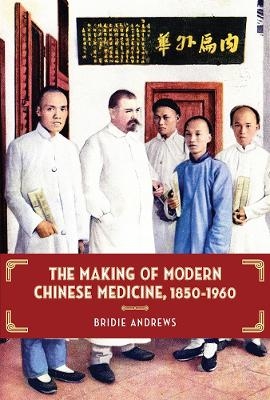
The Making of Modern Chinese Medicine, 1850-1960
Seiten
2014
University of British Columbia Press (Verlag)
978-0-7748-2432-3 (ISBN)
University of British Columbia Press (Verlag)
978-0-7748-2432-3 (ISBN)
- Titel ist leider vergriffen;
keine Neuauflage - Artikel merken
A history of the convergence of Western and Chinese medical practices in modern China.
Medical care in nineteenth-century China was spectacularly pluralistic: herbalists, shamans, bone-setters, midwives, priests, and a few medical missionaries from the West all competed for patients. In the century that followed, pressure to reform traditional medicine in China came not only from this small clutch of Westerners, but from within the country itself, as governments set on modernization aligned themselves against the traditions of the past, and individuals saw in the Western system the potential for new wealth and power. This book examines the dichotomy between “Western” and “Chinese” medicine, showing how it has been greatly exaggerated. As missionaries went to lengths to make their medicine more acceptable to Chinese patients, modernizers of Chinese medicine worked to become more “scientific” by eradicating superstition and creating modern institutions. Andrews challenges the supposed superiority of Western medicine in China while showing how “traditional” Chinese medicine was deliberately created in the image of a modern scientific practice.
Medical care in nineteenth-century China was spectacularly pluralistic: herbalists, shamans, bone-setters, midwives, priests, and a few medical missionaries from the West all competed for patients. In the century that followed, pressure to reform traditional medicine in China came not only from this small clutch of Westerners, but from within the country itself, as governments set on modernization aligned themselves against the traditions of the past, and individuals saw in the Western system the potential for new wealth and power. This book examines the dichotomy between “Western” and “Chinese” medicine, showing how it has been greatly exaggerated. As missionaries went to lengths to make their medicine more acceptable to Chinese patients, modernizers of Chinese medicine worked to become more “scientific” by eradicating superstition and creating modern institutions. Andrews challenges the supposed superiority of Western medicine in China while showing how “traditional” Chinese medicine was deliberately created in the image of a modern scientific practice.
Bridie Andrews is an associate professor of history at Bentley University and teaches history of medicine at the New England School of Acupuncture. She has co-edited two books, Western Medicine as Contested Knowledge (1997) and Medicine and Identity in the Colonies (2003).
1 Modernities and Medicines
2 The Spectrum of Chinese Healing Practices
3 Missionary Medicine from the West
4 The Significance of Medical Reforms in Japan
5 Public Health and State-Building
6 Medical Lives
7 New Medical Institutions
8 From New Theories to New Practices
9 Conclusions: Medicine and Modernity with David L. Schwarzkopf
Notes; Bibliography; Index
| Reihe/Serie | Contemporary Chinese Studies |
|---|---|
| Zusatzinfo | 10 b&w photos, 2 line art, 2 maps, 2 tables |
| Verlagsort | Vancouver |
| Sprache | englisch |
| Maße | 152 x 229 mm |
| Gewicht | 600 g |
| Themenwelt | Sachbuch/Ratgeber ► Gesundheit / Leben / Psychologie ► Alternative Heilverfahren |
| Medizin / Pharmazie ► Naturheilkunde ► TCM / Ayurveda | |
| Studium ► Querschnittsbereiche ► Geschichte / Ethik der Medizin | |
| ISBN-10 | 0-7748-2432-8 / 0774824328 |
| ISBN-13 | 978-0-7748-2432-3 / 9780774824323 |
| Zustand | Neuware |
| Haben Sie eine Frage zum Produkt? |
Mehr entdecken
aus dem Bereich
aus dem Bereich
Die Geschichte eines Weltzentrums der Medizin von 1710 bis zur …
Buch | Softcover (2021)
Lehmanns Media (Verlag)
CHF 27,90
Krankheitslehren, Irrwege, Behandlungsformen
Buch | Softcover (2024)
C.H.Beck (Verlag)
CHF 55,90


